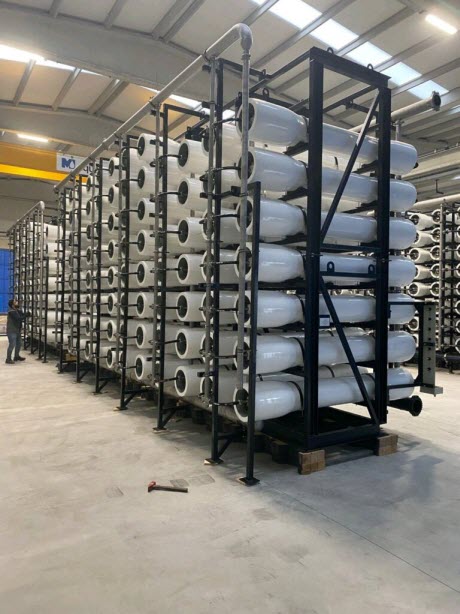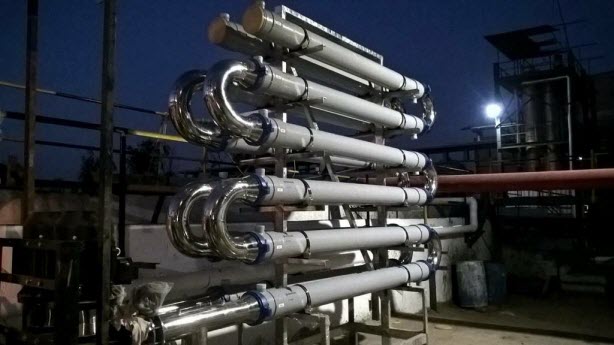Impact of Desalination Plants in Colombia Market
Desalination plants have become a huge business in Colombia. The reason for this is because the water in the country is scarce. In order to make up for this, they need to process the water to be able to sell it. This requires the help of reverse osmosis and the dilution of the brine.
Why Reverse Osmosis Plants are Growing in Colombian Market?
In the last 15 years, reverse osmosis desalination plants have been improving in both technology and capacity. They are now capable of producing healthy balances between fresh water and brine.
Reverse osmosis desalination is used to produce potable drinking water and agricultural irrigation water. It is also used for the manufacture of special foods. The process is not very cheap but it is efficient.
Many people in Colombia and other Latin American countries have to travel long distances to purchase clean water. Well water, on the other hand, is salty and contaminated. This can result in kidney failure and even death.
Reverse osmosis uses membranes to remove dissolved solids and impurities from water. It can also be used to treat municipally treated water.
The reverse osmosis membranes are made of aromatic polyamides. Water is then passed through the semi-permeable membrane. Some of the salts are rejected while other impurities are removed. At the end of the process, the product water is high in saline content and slightly acidic.
There are many factors involved in the construction and operation of reverse osmosis plants. However, they are more affordable than thermal desalination. Using renewable energy is another factor in reducing the cost of reverse osmosis.
Most of the plants in the Saudi Arabia market are reverse osmosis plants. This makes up more than half of the total capacity of these facilities.
There are several different reverse osmosis processes. These include the MFT Cologne and Infinite Fingers system. The technology utilizes wind and solar power to power the plants. This system can operate 24/7 and can be remotely monitored.
For those with a private well, it is important to have a reverse osmosis water treatment system. The system ensures the safety of the water. Often, a private well has dangerous pathogens.
Why Dilution of the Brine is Necessary in RO Systems?
The use of desalination technology can provide clean water in areas with limited funds and energy. However, in some countries, lack of regulation and corruption can inhibit these efforts.
The impact of concentrated brines on the environment can be severe. In particular, the discharge of concentrated solutions can negatively affect the marine life in its vicinity. For this reason, special effort must be taken to monitor and treat the brines before and after their discharge.
Brine dilution is important because it can reduce the concentration of the brine by as much as 10%. Ideally, the dilution of brines should occur before they reach the sea. However, in some cases, the dilution can take place in a short distance from the outlet.
Dilution of the brine is not a new idea. Reverse osmosis has been used to dilute seawater. But this process is a complicated one.
What is Energy Consumption in Desalination Plant?
Desalination is a technology that has been around for a long time. It is a process that uses a variety of technologies to separate drinking water from seawater. Typically, this involves using a membrane. The membrane prevents the passage of chemicals and allows the water molecules to pass through. However, this is not the cheapest process.
One of the most expensive processes to run is reverse osmosis. This process uses seawater at a high pressure.
Another way of reducing the cost of desalination is to use renewable energy. Renewable energy includes solar and wind power. When combined, these renewable resources can reduce energy costs by up to 60 percent.
A recent reliable study looked at the potential of renewable energy-assisted desalination in Iran. The researchers analysed the country’s energy status, background, and water availability to assess the country’s current status. They found that Iran has a huge potential for water scarcity solutions.
Some countries have set up a burgeoning desalination industry. While this industry has had a positive impact on the economy, it has also had a negative effect. Many communities are forced to travel several hours to buy clean water.
There are currently about 17,000 desalination plants in fifteen countries. Most of the plants are located in the Middle East. However, the United States, Australia, and China are also evaluating the potential of desalination.
Environmental Impact of Desalination Plants
Desalination plants in Colombia can be beneficial for delivering clean water in regions with little or no public money or energy.
In the Colombian state of La Guajira, one of the most impoverished departments in the country, residents suffer from the lack of clean drinking water. One way to tackle this problem is to install a self-powered water desalination plant. Currently, the plant is being distributed throughout the region. It is expected to become a model for other countries.
The Bottom Line
In conclusion, desalination is a promising technology that can improve clean water supplies in regions that lack access to reliable infrastructure. Choosing the right technology for a desalination plant is also an essential factor. This will depend on the geographical conditions and environmental factors.













